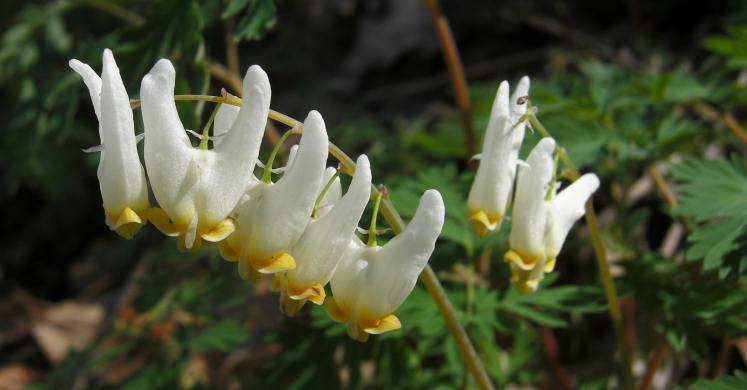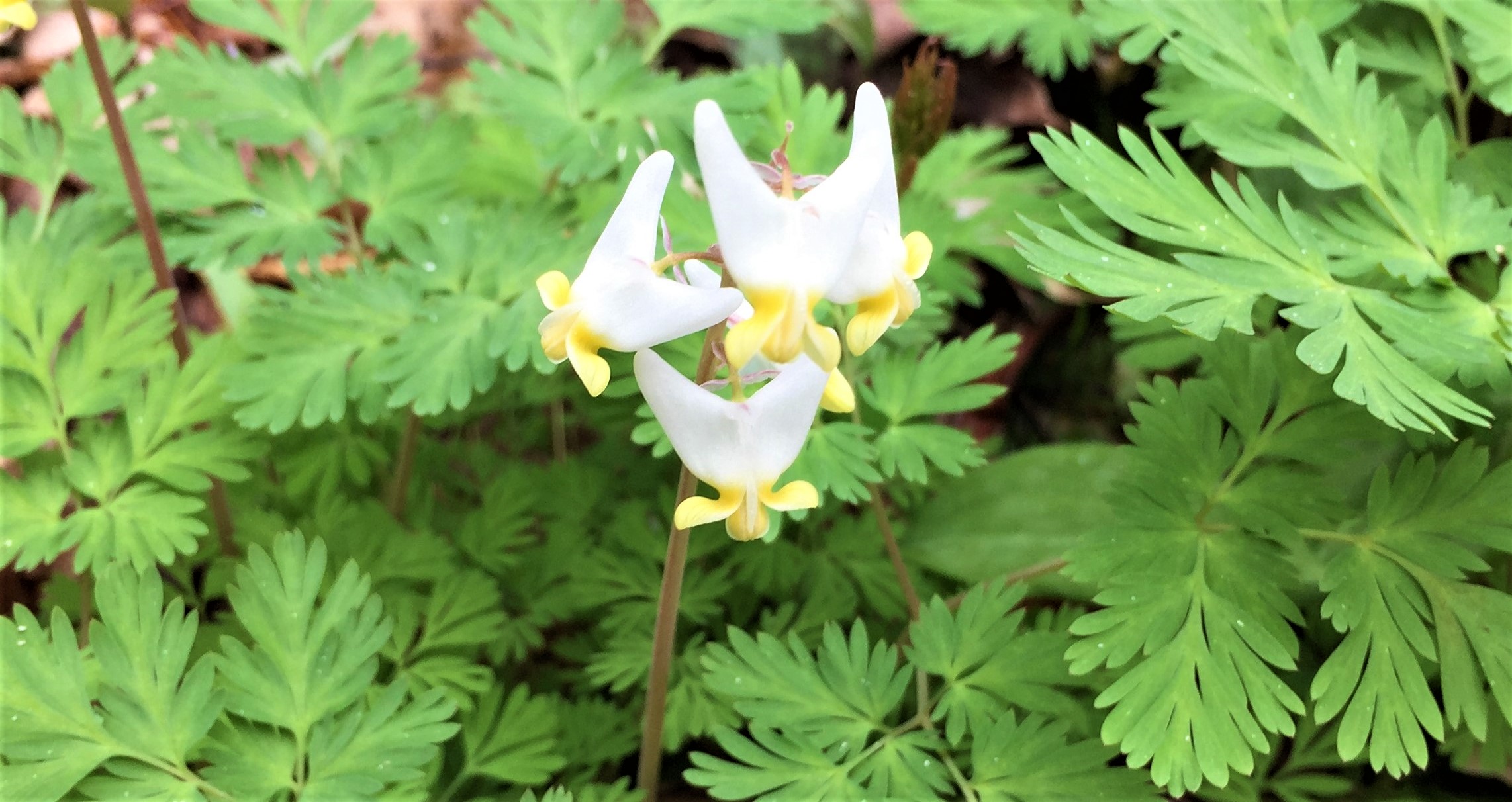Blog

#bioPGH Blog: Dutchman’s Breeches
 A resource of Biophilia: Pittsburgh, #bioPGH is a weekly blog and social media series that aims to encourage both children and adults to reconnect with nature and enjoy what each of our distinctive seasons has to offer.
A resource of Biophilia: Pittsburgh, #bioPGH is a weekly blog and social media series that aims to encourage both children and adults to reconnect with nature and enjoy what each of our distinctive seasons has to offer.
Imagine you’re a cow. Let’s say a lovely fawn-colored Guernsey, just minding your own bovine business one day in early spring. Your pasture includes a wooded area, but the leaf canopy hasn’t grown in yet, giving ample sunlight to the ground below where delicious new plant shoots are finally emerging. And after a snowy, muddy winter, you’re quite excited for nature’s salad of baby greens! After some snacking, though, your cattle legs seem to wobbling. The world starts to look like an odd caricature of itself. Maybe everything is shaky, and you just feel rotten. My dear cloven-hooved friend, you may have eaten some staggerweed. An unpleasant experience if you only ate a little, though quite dangerous or deadly if you consumed too much (we will say you only sampled it.) Though ingesting this plant was not the highlight of spring for you, many of your two-legged friends seem to have a different opinion of this plant – especially when it’s safely away from you along a wooded path. The woodland wandering two-legged folk call it something different than staggerwood, though; they often call this little spring ephemeral Dutchman’s breeches. Alright, Guernsey, let’s say you’re back to a human while we explore this tiny spring plant, shall we?
Dutchman’s breeches (Dicentra cucullaria) are an early spring wildflower (a spring ephemeral) in the poppy family, Papaveraceae.* They can be found across the eastern half of North America, plus a little pocket in the Pacific Northwest. The plant itself is small, generally only ten inches tall, and the namesake white flowers are less then an inch long – roughly the size of an adult’s thumbnail.

Photo: National Park Service
Their name comes from a part of the flower called the nectar spurs – on Dutchman’s breeches, each nectar spur looks like a little puffy, white pants leg. These nectar spurs hold the tiny nectaries, the part of the flower that produces nectar. These nectaries are slightly difficult to access for some foragers, but notably, they are an important food source for a group of pollinators active at this time of year: nesting queen bumble bees. While these queen bees seek out nesting sites, they need to fuel up, and the early spring blooms of Dutchman’s breeches are an important nectar source. This is a beneficial pollen distribution for the flower as well, but if no pollinators reach a plant, Dutchman’s breeches can self-pollinate as well. After pollination and seed production, Dutchman’s breeches seeds are distributed by ants! Ants retrieve the seeds and eat an outer fleshy layer around the seed. The remainder of the seed is left in the ground where it can eventually germinate.
If you remember from your time as a cow, Dutchman’s breeches may be lovely to look at and it’s ecologically important in its native landscape, but it is not particularly in the realm of edible plants. The plants contain isoquinoline alkaloid compounds, which impact the central nervous system; the resulting tremors, convulsions, and paralysis from ingesting the plant are how they earned one of their other common names, staggerweed. There is some documentation of attempts to render medicinal properties from the plants, but it doesn’t sound worth the risk on this one. Always remember that all-natural does not mean all-safe!
Dutchman’s have already started blooming in different spots in Western Pennsylvania – be sure to get out there and enjoy!
*A note on the family name. Dutchman’s breeches was moved from the plant family Fumariaceae to Papaveraceae in the early 2000’s. However, if you’re searching around on the internet, not all websites have been updated to reflect this change. When in doubt about a plant’s taxonomical information, Laura Schoch, Phipps’ Plant Recorder, recommends using the Integrated Taxonomic Information System to find the most up-to-date names.
Connecting to the Outdoors Tip: The wildflower preserve at Raccoon Creek State Park is always a good option for spotting spring ephemerals. The geology of the land makes it a perfect habitat for a variety of wildflowers from Dutchman’s breeches to trillium to Virginia bluebells, and everything in between!
References
Cornell University: Dutchman’s Breeches
Purdue University Extension: Guide to Poisonous Plants
St. Olaf’s College: Dutchman’s Breeches
USDA Plant of the Week: Dutchman’s Breeches
Lady Bird Johnson Wildflower Center: Dutchman’s Breeches
Photo Credits: Cover, Jason Hollinger, CC-BY-2.0

